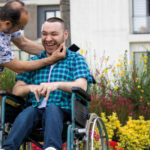By Brigid Featherstone, Stephen Crossley, Anna Gupta, Jadwiga Leigh, Joanne Warner and Susan White
Louise Casey’s report into the child sexual exploitation that took place in Rotherham has proved highly significant, both in the immediate sense for Rotherham council and in terms of possible future policy changes.
The report has received surprisingly little scrutiny, however, although this is vital to ensure the answers proposed are helpful in dealing with the horrors of child sexual exploitation (CSE).
There are two troubling aspects of the report. Firstly, the process by which it was prepared, in particular, the lack of rigour and transparency in the methods used to gather and analyse data. Secondly, its failure to connect what happened in Rotherham with the current model of child protection that dominates services, and the need for change in this respect.
Independence
While Louise Casey was appointed to lead an ‘independent’ inspection into Rotherham, it was effectively an internal appointment by her boss Eric Pickles, the secretary of state for Communities and Local Government. She was free to choose both her own inspection team and her own methods for the inspection.
While the report contains a ‘Background and methodology’ section it tells us very little about the methods used. We are told over 200 meetings were held and the eight strong inspection team ‘reviewed documentary evidence, sampled cases and processes’ comprising up to 7,000 documents, 68 cases from children’s services, 19 staff files, 22 taxi licensing cases.
It also reviewed policies, procedures and practices. However, we are not told how this massive volume of information was reviewed and analysed within what was a very short time frame. This gap in the report should concern us, as it goes to the heart of issues of accuracy, transparency and rigour.
‘No information on methods’
Gathering a wide variety of data, getting the sampling strategy right and using robust methods of analysis to guard against ‘cherry picking’ findings are all recognised as important activities in research, in order to have faith that findings are as accurate as possible.
But Casey gives us no information on what methods were used to draw her conclusions, conclusions that are extremely damming with Rotherham council emerging as uniquely dysfunctional via a process where no attempt was made to locate the council or its ways or working within a broader context.
This lack of attention to context is very evident when assessing practice. While Casey acknowledged the existing child protection system is not designed for safeguarding children from CSE, the implications of this are not explored and Rotherham’s approach to child protection is treated as if it was uniquely problematic.
‘Extremely unfair’
This is extremely unfair to caring, committed practitioners and managers working within an established approach and subject to serious sanction, often, if deviating from it. She also misses an important opportunity to explore why the established model of child protection might be so problematic for children and young people subject to CSE.
This model is not concerned with spending time in communities, getting to know young people and their families and developing risk sensible practices in very anxiety provoking circumstances. It is concerned with visiting individual family homes to assess for family dysfunction or risk, particularly to younger children, and has been honed within a societal context that often appears openly hostile towards their older teenage siblings.
The ‘child rescue’ model dominating child protection practice can compound the common perception that parents are in part responsible for the sexual exploitation of their child, thereby creating barriers to effective engagement.
Blame and disempowerment
Parents in Rotherham were often desperate for help, desperate to be partners in protection and were themselves victimised by forces way beyond their control. Moreover, as the Oxfordshire SCR found, a culture of blame and disempowerment of parents can lead to a loss of shared focus by all parties.
An emphasis on inter-familial risk fails to acknowledge that older children have agency and are increasingly influenced by wider peer, community and societal factors. In Rotherham, community engagement became outsourced to male (mainly) leaders rather than being seen as core business for child protection social workers. Individual risk assessment was the only game in town and when that was not tenable there was nowhere else for hard pressed practitioners to go often.
It is increasingly clear that CSE is not a unique to Rotherham and occurs in many different forms across the country. The Oxfordshire report highlights the complex power relationships that framed the lives of the young people and the incredibly difficult task of trying to help them. This complex work is made much more difficult in a risk-averse climate where social workers and local authorities feel blamed and shamed.
We would suggest that Casey’s report represents a missed opportunity to construct a more hopeful climate for children, young people, their families and those seeking to support them with a very serious and complex issue such as CSE.



 Bournemouth, Christchurch and Poole
Bournemouth, Christchurch and Poole  Hampshire County Council
Hampshire County Council  Oxfordshire County Council
Oxfordshire County Council  South Gloucestershire Council
South Gloucestershire Council  Wokingham Borough Council
Wokingham Borough Council  Providing a lifeline for social workers who want to get back into the sector
Providing a lifeline for social workers who want to get back into the sector  The highs and lows of a children’s services’ transformation journey
The highs and lows of a children’s services’ transformation journey  Embedding learning in social work teams through a multi-agency approach
Embedding learning in social work teams through a multi-agency approach  The family safeguarding approach: 5 years on
The family safeguarding approach: 5 years on  Harnessing social work values to shape your career pathway
Harnessing social work values to shape your career pathway  Workforce Insights – showcasing a selection of the sector’s top recruiters
Workforce Insights – showcasing a selection of the sector’s top recruiters  Join our team to help technology enabled care transform lives in Nottinghamshire
Join our team to help technology enabled care transform lives in Nottinghamshire  Free CPD on Parkinson’s for health and social care staff
Free CPD on Parkinson’s for health and social care staff 

 Facebook
Facebook X
X LinkedIn
LinkedIn Instagram
Instagram
When social work talks of ‘Evidenced Based’ Approaches’ does it mean this? How many other reports and recommendations for practice over the years have fallen short academically once scrutinised? Is this the only one? CSE isn’t new yet was missed and is part of the broken system in which social workers operate. Evidenced based approaches failed in the past for these children and their families, are we to believe they will work in the future?
I am currently a lecturer with the University of the Highlands & Islands (Inverness College) and amongst other courses I teach on one that relates to Risk assessment and Child Protection. I can confirm that in relation to the studies I have looked into as a consequence the emphasis is clearly on the individual family, and as noted, the risk of harm from their own families.
Certainly this risk applies, but as indicated by this article it is not a model that is relevant to the situation of criminal gangs, the involvement of peer group pressures, and the panoply of threats to one’s family, (rather than the family threatening you) that is described by the young people caught up and trapped in these ‘sex rings’.
This is effectively a form of wide-ranging sexual ‘slavery’ that has its origins in situations and circumstances that will often lie well outwith the original families of its victims.
It is in effect, ‘a horse of a different colour’. Dominic Thierry
Really good article I completely agree that the child protection framework is not fit for purpose in addressing the needs of young people especially those involved in CSE.
At last some questioning of a report into child sexual exploitation. Practitioners are regularly accused of being too optimistic or naive in situations of child abuse.However it is a different thing to question the naivety of those in authority. It is vitally important that these reports should have some sense of history and the greater general context within which social care operates. I go back to the original report into Rotherham by Alexis Jay. I understand that she was previously a social services director in Scotland. Does her report make any mention of her or her department’s awareness of child sexual exploitation when she was managing a social care department?
Social care is repeatedly beset by media driven moral panics about social issues some fuelled by the public and on other occasions with the media leading by the nose. Either way the result is that politicians go into a complete panic and start looking round for scapegoats. They have less than independent (but presented as objective) people who feed into their paranoia and concern that “this will be a vote loser.” Even if a report has some objectivity it will be taken up by the media who will not seek to present a balanced view of the report but cherry pick those things that support their agenda of castigating social care in the main.
How many media outlets chose to demonstrate how Ray Jones recent book about Baby P redresses some of the thousands of column inches which were devoted to castigating social care at the time-the recent BBC documentary being an honourable exception.
I have been a front line social worker for 37 years. I had no experience of gang related exploitation but had a number of experiences where young women (and some young men) were being exploited by individuals. I therefore have some experience of how complex and difficult this work is. I went to a recent seminar given by Professor Jenny Pearce of the University of Bedfordshire who has significant experience of this area of work where she has done extensive research; Jenny talked of the difficulty of engaging young people whose previous experiences with both their parents and the authorities have been damaging and made them distrustful prior to their exploitation. Jenny stressed that young people should not be approached as victims and themselves would reject that label. Being treated as a victim is not empowering and is likely to be rejected.
I wholeheartedly agree that working with these young people requires agencies to commit to outreach and to providing support over long periods if trust is to be gained. In my experience there was not a time where social care agencies were fully committed to community involvement but over the years what involvement there was has been greatly depleted. Local authority social work has become increasingly centralised with an emphasis on targets and outcomes when an investment in this work has to be the product of a belief that it is the right thing to do and not to expect quick solutions.
l always felt that it was to the great credit of Social care in Rotherham that they had financed an outreach team that began to get in touch with the young people. Their problem was that they could not handle the implications of the information that team started to uncover.
Just finally I would stress the importance of those with power within social care being open about the resource (and therefore financial implications) if the issue of CSE is to be prioritized. There also needs to be a greater contextualizing of issues. My impression is that attitudes to this age group is ambivalent both for the public, media and politicians. Otherwise we continue with situations where politicians can get away with scapegoating and blaming which is what we have had to date.
Has there been an attempt to listen, to understand,thus far. Very little it would seem. However what we have had is the usual blaming and scapegoating and now the threat of imprisonment for hard working and dedicated social care staff.